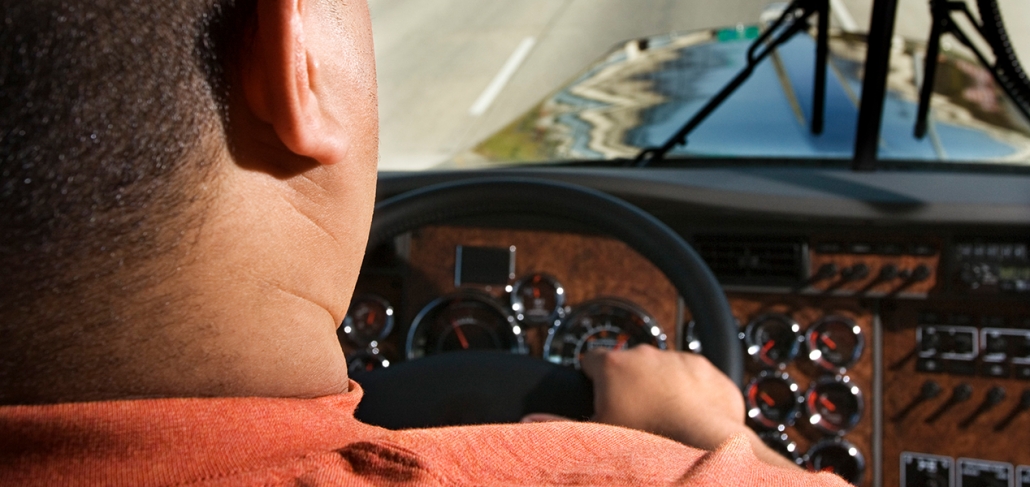Truck driving is considered one of the most dangerous jobs in the country. That’s no deterrent to passionate drivers who love the job and the independence it gives them. While most truckers and carriers prioritize safety, truck drivers still get injured in crashes every year. Even the most well-trained, safety-conscious drivers can occasionally engage in dangerous truck driving behaviors which put them in jeopardy. Driving defensively isn’t everyone’s favorite activity, but it’s essential to be a truck driver. Use this handy guide to double-check you aren’t doing these five things while behind the wheel.
1. Speeding
The Large Truck Crash Causation Study reported that 23% of large-truck crashes occurred when truck drivers were traveling too fast for the conditions. Speeding anytime in a large vehicle is a bad idea, but particularly in adverse conditions. Adjust your speed to match road conditions, weather conditions, low visibility, or high traffic.
The rule of thumb is to reduce speed by 1/3 on wet roads and ½ or more on snow packed roads.
Speeding is also a bad idea when entering curves. The posted speed limit on curves are intended for passenger vehicles, not large trucks. So, you should be driving even slower than the 30-mph posted on a curve, even if it annoys all the passenger vehicles behind you! Similarly, maintain a safe speed while entering or exiting highway ramps. Truck rollovers are more likely to occur on ramps and curves when drivers misjudge the sharpness and drive too fast. Another area to be particularly careful about is work zones. Nearly a quarter of work zone deaths involve large trucks. Be mindful of lane closures and start slowing down before the work zone begins.
2. Not scanning properly
Driving defensively means being constantly aware of your surroundings. If you’re able to monitor everything happening, you can anticipate what other vehicles will do before they do it. Looking far enough ahead will allow you to adapt earlier to slower traffic and lane closures. The rule of thumb is to look at least 15 seconds in front of you- that’s about ¼ mile on the highway or 1 ½ city blocks. In addition to looking ahead, you should be scanning what’s going on immediately “around” you. Checking your mirrors will give you an idea of who’s behind you and which vehicles are looking to pass.
Checking mirrors often will also show you who’s about to be in your “no-zone”.
Driving large trucks means having large blind spots. Passenger vehicles may be unaware that sometimes they virtually disappear from your view if caught in your “no-zone”!
3. Changing directions suddenly
In general, the larger the vehicle the more difficult it is to change directions or make turns. You need to allow for more time to make turns or even move into adjacent lanes. If you’re about to miss a turn or exit, take your time to pass and find a safe way to change directions. Always make sure to use signals accordingly before changing directions. Passenger vehicles often assume that trucks will stay on the same lane or route for long distances of time. If you change without signaling, these vehicles may panic and react unpredictably. Similarly, you should approach intersections and curves with caution, because you may need to change directions. Remember that driving defensively means taking your time and making sure others on the road understand your intentions.
4. Getting distracted
Here is one of the biggest causes of accidents behind the road- driving while distracted. Avoid using your cell phone while driving. While texting is obvious to avoid, even looking at your phone for a few seconds takes your eyes off the road. Cell phones involve all four of the major distraction categories. They are visual, auditory (require you to listen), biomechanical (require you to use your hands), and cognitive distractors (require you to engage in mental tasks).
The risk of a crash is four times higher when using a cell phone.
At the same time, you want to avoid eating behind the wheel as much as possible. It also involves visual and biomechanical distractions. While sipping on a soda or water shouldn’t be a problem, having a second Thanksgiving meal behind the wheel poses obvious problems. Use your judgment and only consume what you need to while on the road. Leave the large meals for when you pull over.
5. Staying too close to other vehicles
All vehicles on the road should be maintaining a safe following distance, but this is especially true for large trucks. They need additional space between vehicles to allow for safe breaking and unexpected turning. In many crashes, trucks often hit the vehicles directly in front of them.
The rule of thumb is that if you’re driving under 40 mph, you should have at least one second for every 10 feet of vehicle length.
For the typical tractor-trailer, this is about 4 seconds between you and the leading vehicle. For speeds over 40 mph, you should add an additional second. Another tip is to double your following distance in adverse road conditions like weather, visibility, or traffic. Don’t forget that braking distance can be greatly affected by road surfaces and weather conditions like rain, ice, and snow.
STAY UPDATED ON INDUSTRY TRENDS AND BEST PRACTICES
Join our community of over 150,000 drivers who receive our updates.



